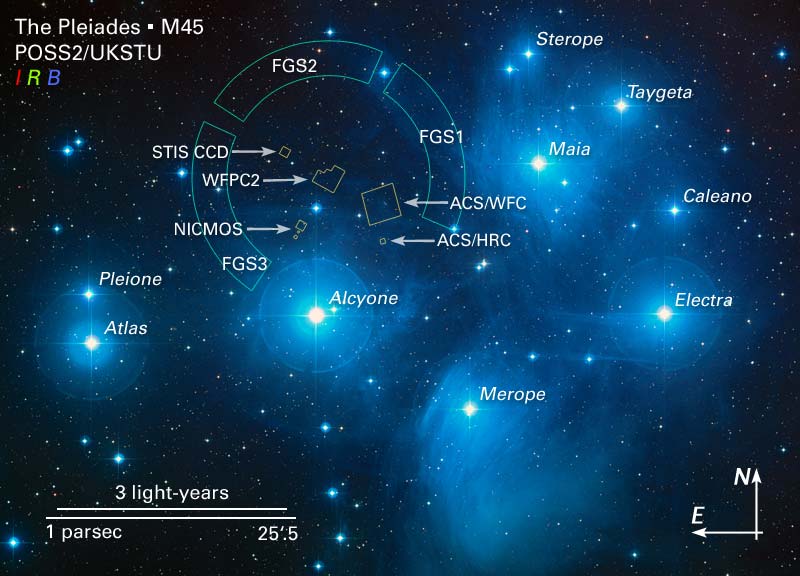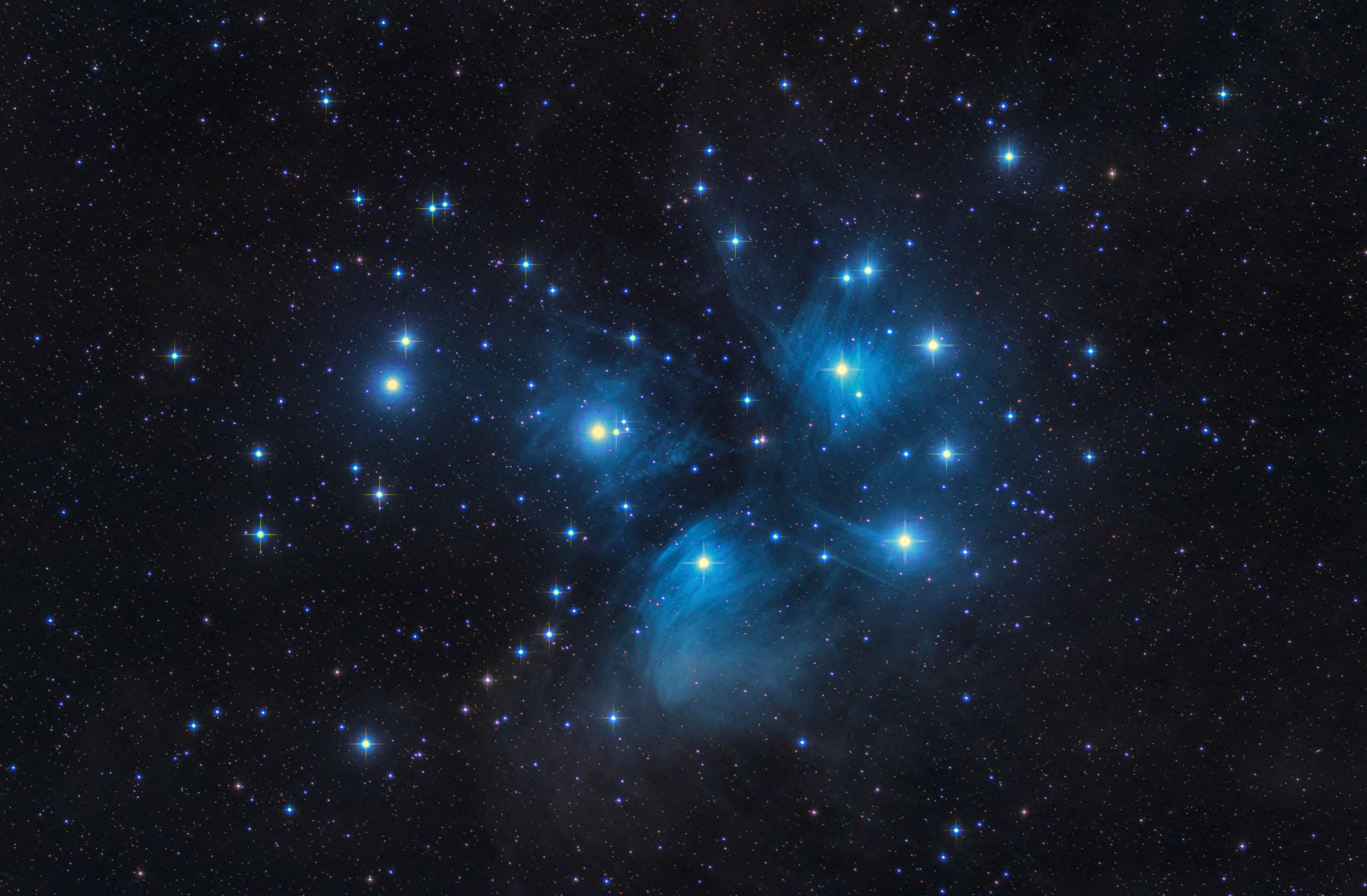Tupuārangi
1. (personal noun) Atlas - one of the stars in Te Kāhui o Matariki, the Pleiades star cluster. A star associated with food that comes from the sky, such as birds, or elevated fruit and berries from trees.
Ko Tupuārangi te whetū e hono ana i te kāhui ki te hopukanga o ngā manu me ngā hua rāngaingai, pēnei i ngā hua me ngā patatini o ngā rākau (Matariki 2017:29). / Tupuārangi is the star connecting the constellation to the capturing of birds and elevated fruit, such as fruit and berries of trees.
Simpson, Mīria
1. (1922-2002) Ngāti Awa; teacher and expert speaker and writer of Māori. Editor of numerous publications, including Ngā Tāngata Taumata Rau (Volume 1) and the Māori section of the Historical Atlas of New Zealand. One of the first commissioners of Te Taura Whiri i te Reo Māori. Awarded a QSM in 1991.
Matariki
1. (personal noun) Pleiades, Messier 45 - an open cluster of many stars in Te Kāhui o Matariki, with at least nine stars visible to the naked eye. The brightest star in the centre of the cluster, also known as Matariki (Alcyone), married Rehua (Antares) and is the mother of the other eight stars of the Pleiades known to Māori. The other eight stars are: Tupuārangi (Atlas), Waipunarangi (Electra), Waitī (Maia), Ururangi (Merope), Tupuānuku (Pleione), Waitā (Taygeta), Pōhutukawa (Sterope) and Hiwa-i-te-rangi (Calaeno). The first appearance before sunrise of Matariki in the north-eastern sky, in the Tangaroa phase of the lunar month, indicates the beginning of the Māori year - about mid-June - and is the cause for celebrations. Matariki disappears at the end of the Māori year and traditionally this was also a reason for celebration with some iwi. During this time when Matariki was absent from the sky, she was said to visit four places, each for seven nights, Maukahau, Tārarau-ātea, Papa-whakatangitangi and Tītore-māhu-tū. Matariki is a truncated version of the name Ngā Mata o te Ariki Tāwhirimātea (the eyes of the atua Tāwhirimātea). Matariki is associated with good health and wellbeing.
Ko te putanga mai o Matariki te tohu mō te marama tuatahi, ko ngā ingoa hoki ēnei o ngā marama katoa: Te Tahi o Pipiri, Te Rua o Takurua,Te Toru Here o Pipiri, Te Whā o Mahuru, Te Rima o Kōpū, Te Ono o Whitiānaunau, Te Whitu o Hakihea, Te Waru o Rehua, Te Iwa o Rūhi-te-rangi, Te Ngahuru o Poutū-te-rangi, Te Ngahuru mā tahi, Te Ngahuru ma rua (TP 1/3/1901:6). / The appearance of Pleiades is the sign for the first month and these are the names of all the months: The first is Pipiri, the second is Takurua, the third is Here o Pipiri, the fourth is Mahuru, the fifth is Kōpū, the sixth is Whiti-ānaunau, the seventh is Hakihea, the eighth is Rehua, the ninth is Rūhi-te-rangi, the tenth is Poutūterangi, the eleventh and twelth months.
Mō te marama o Mei, arā o Te Hakiharatua ki tā te Māori, o te tau 1922: Ko Matariki te whetū kei te ārahi i tēnei marama, he wehenga tau ki tā te Māori whakahaere (TTT 1/5/1922:13). / For the month of May, that is Te Hakiharatua according to the Māori, of the year 1922: The Pleiades is the star that heralds this month and divides the year according to the Māori system.
See also Huihui-o-Matariki, Te, Tupuārangi, Waipunarangi, Waitī, Ururangi, Tupuānuku, Waitā, Tātai-o-Matariki
Synonyms: Huihui-o-Matariki, Te, Tātai-o-Matariki


